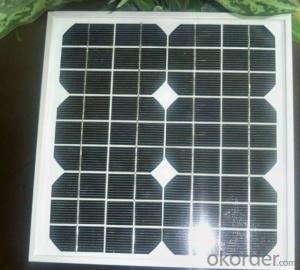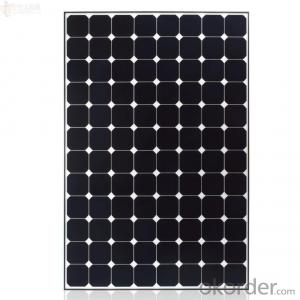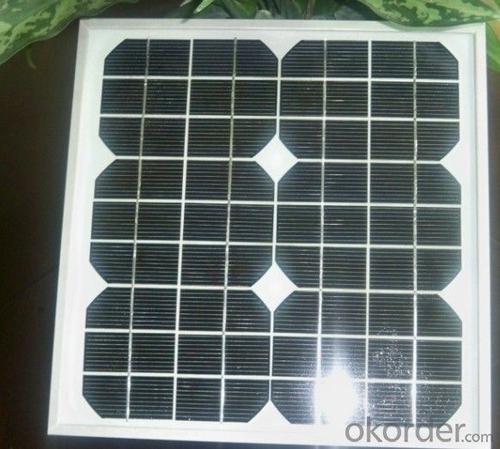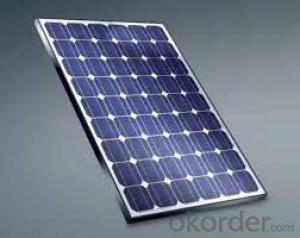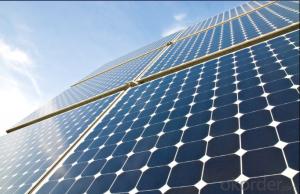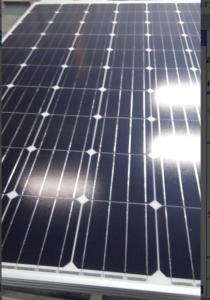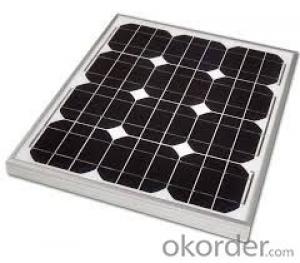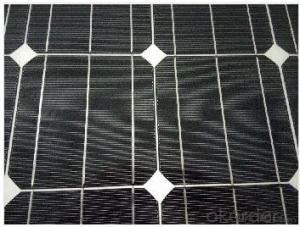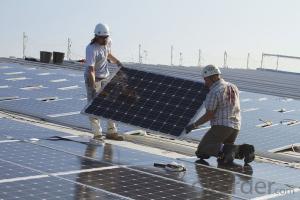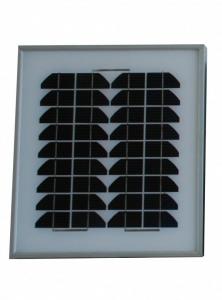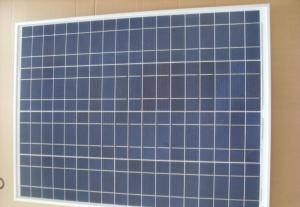Buy Small Monocrystalline Solar Panels Online - CNBM
- Loading Port:
- Qingdao
- Payment Terms:
- TT OR LC
- Min Order Qty:
- 10 set
- Supply Capability:
- 300000 set/month
OKorder Service Pledge
OKorder Financial Service
You Might Also Like
1.5W to 180W Monocrystalline Solar Panel
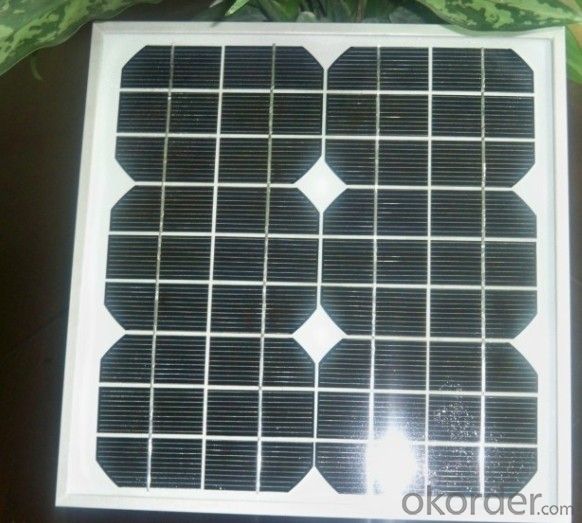
Quick Details
Place of Origin: | China (Mainland) | Brand Name: | CNBM | Model Number: | XRP-156M-250W |
Material: | Monocrystalline Silicon | Size: | 1620x992x40mm | Number of Cells: | 60 |
Max. Power: | 250w | Optimum Operating Voltage (Vmp): | 28.8V | Optimum Operating Current (Imp): | 8.68A |
Open Circuit Voltage (Voc): | 36V | Short Circuit Current (Isc): | 8.87A | Maximum Power at STC (Pmax): | 250W |
Operating Module Temperature: | -40 °C to +85 °C | Maximum System Voltage: | 1000 V DC (IEC) / 600V DC (UL) | Maximum Series Fuse Rating: | 15A |
Packaging & Delivery
Delivery Detail: | two weeks after order confirmation |
Features:
1) High Module conversion efficiency, through superior manufacturing technology
2) 0 to +5W positive tolerance for mainstream products
3) Certified to withstand high wind loads and snow loads
4) Anodized aluminum is for improving corrosion resistance
5) Anti-reflective, Highly transparent, low iron tempered glass
6) Excellent performance under low light environment
Benefit:
25-year performance warrant
10-year Product warranty
Electrical Characteristics:
Item No. | XRM-250W |
Optimum Operating Voltage (Vmp) | 28.8V |
Optimum Operating Current (Imp) | 8.68A |
Open Circuit Voltage (Voc) | 36V |
Short Circuit Current (Isc) | 8.87A |
Maximum Power at STC (Pmax) | 250W |
Cell Efficiency | 17.70% |
Operating Module Temperature | -40 °C to +85 °C |
Maximum System Voltage | 1000 V DC (IEC) / 600V DC (UL) |
Maximum Series Fuse Rating | 15A |
Power Tolerance | 0/+5 % |
STC: lrradiance 1000 W/m2, module temperature 25 °C, AM=1.5;
Best in Class AAA solar simulator (IEC 60904-9) used, power measurement uncertainty is within +/- 3%
Mechanical Characteristics:
No. of Cells | 60(6X10) |
Dimensions | 1640x992x40MM |
Weight | 20.0KGS |
Front | Glass 4.0 mm tempered glass |
Frame | Anodized aluminium alloy |
Temperature Characteristics:
Nominal Operating Cell Temperature (NOCT) | 45±2°C |
Temperature Coefficient of Pmax | -0.44 %/°C |
Temperature Coefficient of Voc | -0.33 %/°C |
Temperature Coefficient of Isc | 0.055 %/°C |
Refer to the Wmp range
Our factory can produce solar panel and solar module from 1.5W-290w (1.5w, 2.5w, 5w, 10w, 20w, 40w, 50w, 60w, 80w, 85w, 125w, 135w, 150w, 165w, 180w), according to customers requirement.
(A). Wmp range: 0.01W-6W, to be sealed with epoxy resin on PCB (printed circuit board), or to be sealed in plastic directly.
(B). Wmp range: 0.01W-15W, to be encapsulated with PET, on PCB (printed circuit board)
(C). Wmp range: 1W-60W, to be encapsulated with PET, on stainless steel, with holes for assembling purpose.
(D). Wmp range: 1W-290W, to be encapsulated with tempered glass, EVA, TPT, together with aluminium frame, junction box and (if necessary)diode and cable.
Refer to the material:
Monocrystalline solar cell or polycrystalline solar cell
Efficiency range 14%-17%, cell size 5/6.
- Q: How will i construct solar panel?
- For powering a something that works on DC, like a gate opener, Elaine is right, and in some cases only ONE bigger cell is sufficient due to battery storage; however if the appliance is 20v AC, then an inverter is needed also. MOST of Elaine's answer is good, but a few corrections are needed: Plywood - use EXTERIOR grade only, and even then it can warp; chipboard or waferboard is preferable as it does NOT warp, BUT is not available most places in 3/8, /2 nominal, (5/32) is usually the thinnest available, and it is heavier than plywood. DO NOT use particle board. Superglue - NO, it dries too fast to be useful, in most cases. Wires - For a single cell OK, but for larger panels the best wire is tabbing wire, (which is flat,) which is available from all commercial solar cell dealers. Be very careful soldering this to the cells, as unless you buy the expensive flexible cells, they are easily damaged; I suggest also getting flux pens with liquid flux. Diode - Necessary, but needs to be large enough to handle voltage and current. Usually 25v and 5-30 amps,, one per panel. Plexiglas - OK, but NOT as long lasting as glass; best glass is the special solar glass which is designed to pass almost all of the proper light frequencies, but IS expensive, and usually needs to be specially ordered since most glass stores do not stock it. Double panes work well with the outer pane glass and the inner plexiglas, (to protect the cell if glass broken,) IF where might get damage, such as 'ground' mounting. AND Frame kits are available for larger panels, but IF you make your own, a good table router is a great advantage. Inverter - IF used for 20v AC appliances you MUST have an inverter capable of handling the load, and the best ones are modified sine, or true sine, wave types, and even the best are less than 50% efficient. Note that they will last longer if NOT used at more than 2/3 capacity.
- Q: Solar panel experiment ?wat are some experiments with solar panels that has not yet been proven? ideas
- Acciona of Spain is actively conducting research in all sorts of alternative energy. I understand they have an experimental solar farm someplace in the desert southwest of the U.S. that is made up of 283,000 panels. I don't know the size of the panels or anything else about the project other than that. 50 years ago it would have been the U.S. conducting leading research in solar energy-especially in the U.S. Southwest.
- Q: I need to be able to charge a 2v 7amp battery with a solar panel. I understand that the charge controller will keep the battery from over charging/discharging, but what I don't understand is the amps.The solar panel is rated at 5watts.The solar panel comes with a 2v 3amp charge controller but will I need to buy a 7amp charge controller and replace it with that for my battery pack? Please explain. Thanks in advance.
- 7 Amp Solar Charge Controller
- Q: Science homework! I need to explain how a solar panel works and draw a Sankey Diagram for the solar panel, can anyone show me a sankey diagram for a solar panel or explain how a solar panel works?? ILL GIVE U BEST ANSWER IF U HELP WITH BOTH =]
- Not very helpful for my needs. I presume you work for one of the mega rich electrical companies. You must be a fun person to share adrink with. I ll provide the drink. At the witches bar. Hemlock i think. .................
- Q: Ok so i can have a problem i have two 5 watt 2 volt solar panels a 2 volt battery and a 400 watt ac 2 volt dc inverter i believe im only getting 5 watts from from my solar panels thats the equivalent of one is there any way i could get full voltage from my solar panels without theoretically burning my wallet.. please help
- I think you need to take some basic courses on electricity. Usually, 8 volt solar panels are required to charge 2 volt batteries. The voltages of photovoltaic cells are set by the material they are made of, only current changes. If you hook up a 2 V solar panel to a 2 V battery, no current will flow, nothing would get charged. You would need some elaborate DC to DC voltage converters to charge a 2 V battery from 2 V solar panels. Solar panels can be connected in parallel or in series, as you've made the mistake of buying 2 V solar panel, you would have to wire them in series and have a charge controller that could limit the voltage of the charge. Did it ever occur to you that two 5 watt solar panels would not be able to provide the power needed by a 400 watt inverter? You're just running off your battery with your set up. Solar power is expensive power, you can not have solar without burning a hole in your wallet.
- Q: I'm part of the Sustainability group at school, the school principal is a d**k and doesn't care about the environment, he only cares about money.Me and the group will be talking in front of him and the school council (the people in-charge of the school's money) To convince them to put solar panels on the school roofs.I know that it definitely will help the school save on electricity bills, but it WILL cost a lot of money to put them in.In the end we just wanna reduce carbon emissions!HELP :)
- Show live examples such as those in Northern CA where the schools working with private industry funded a complete solar installation for a school district. Yes it can be done!
- Q: Thanks
- Initial cost , space occupied AND DAILY CYCLE (unless through a battery) are the only disadvantages. REST ARE ALL ADVANTAGES
- Q: I would like to know how do you build a solar panel?
- There are several types of solar panels. If you mean photovoltaic panels for generating electricity, that is a really advanced project that few amateurs are equipped to do. In the long run, it will be a lot cheaper and easier to buy factory made PV panels. You can try building one by sandwiching an array of photovoltaic cells between a sheet of glass or plexiglass and a sheet of aluminum. Remember that this assembly must be able to withstand great heat, and it must be sealed to make absolutely sure it does not leak. So basically, you need to lay out the PV cells and wire them together to get the desired voltage and current, with some arrangement to allow the wires to extend outside without leaking. Then you enclose the panel around all four edges with aluminum channel and seal with silicone sealer. Lay it on thick and test thoroughly with water hoses to eliminate all leaks. As mentioned, it's easier and cheaper to buy them factory made. If you mean a heat collector for a solar house heating system or hot water system, that is just a matter of building a thin, flat aluminum box with a glass lid. For hot air, you just need to circulate the air through the box when the sun is shining. For water, you need to have some arrangement to pass the water through the compartment in thin walled metal tubing. You won't be surprised when I say it's cheaper to buy one factory made. Good luck.
- Q: I am looking at building my own solar panels to at least help cut down the rising energy bill. I know its expensive. I already have the solar cells so no need to worry about listing that. But i am looking at wiring it directly into the house. Is there any parts that you could list for me, that would be great. thanks
- You're missing a few assumptions: - where on the globe? - how well is your house insulated, how do you plan to heat/cool your house? - why do you insist on power wasting appliances like plasma screens? Usually, unless it's absolutely impossible, a grid-tie-in system is much better than an insular system. You could use the grid to 'store' electricity for those times when the sun isn't shining and as fall-back if your yield isn't quite as good as you calculated. With the battery system, you'll have to specify your reliability requirements. If you want a 00% guarantee that you'll always have electricity, even if the sun is not shining for a week longer than you've planned according to the past weather history of your area, you'll either have to ridiculously oversize your battery (and panel) system, or plan for some sort of backup system anyway. Finally, if you're really planing such a system, you might want to take a look at the fridges and freezers used on sailboats: these use a eutectic cold accumulator, i.e. you 'charge' the fridge when the engine is running (or the sun is shining) and it'll then keep the temperature for another ~2...35 (professional systems) hours.
- Q: Can solar panels be used to power a water pump?
- Yes, solar panels can be used to power a water pump. Solar panels convert sunlight into electricity, which can be used to power various devices and appliances, including water pumps. This allows for a sustainable and environmentally friendly way to pump water without relying on traditional energy sources.
Send your message to us
Buy Small Monocrystalline Solar Panels Online - CNBM
- Loading Port:
- Qingdao
- Payment Terms:
- TT OR LC
- Min Order Qty:
- 10 set
- Supply Capability:
- 300000 set/month
OKorder Service Pledge
OKorder Financial Service
Similar products
Hot products
Hot Searches
Related keywords
